It’s going to be difficult.
You’ll need to post consistently (at least once per week), for at least 6 months.
But, it’ll be worth it. You can achieve unprecedented results from this marketing tactic.
Obviously, I’m talking about guest blogging – one of the most amazing growth hacks.
Let’s have a look at a guest blogger success story.
Leo Widrich (Buffer’s founder) launched a guest blogging campaign to acquire users.
Buffer grew to 100,000 users by getting 150 guest posts published in 9 months.
In this post on top guest blogging tips, I’ll share more such amazing guest blogging campaigns.
Are you motivated, but not quite sure exactly how to become a guest blogger?
Read on.
5 benefits of guest blogging
Before we look into the exact steps to launching a guest blogging campaign, let’s have a look at its 5 major benefits.
1. Referral Traffic – This is the most immediate benefit.
If you’re a blog owner, as soon as you publish a guest post on a high-authority blog, you’ll get some direct visitors to your own blog.
How sweet is that instant spike in referral traffic…right?
Danny Iny, of Firepole Marketing, took his blogging business to seven figures. Can you guess the chief ingredient of his success?
Yes. He became a consummate guest blogger.
He wrote over 80 high-quality guest posts to grow from 0 to 23,000 monthly pageviews.
2. Growing Email List – Lack of audience is one of the biggest challenges faced by blog owners who are just starting out.
Don’t worry.
Guest posting on authority blogs in your niche can help you gain subscribers.
Jeff Goins managed to get 10,000 subscribers in 18 months by becoming a guest blogger.

More on planning and setting up this bribe later on in this article.
3. Link Building and SEO – I know. Google has taken a strict stance against guest blogging for SEO.
But, you only need to avoid spammy tactics.
You can link contextually from content in your article to a relevant blog post on your website.
Links from the guest posts will increase your overall site authority and will still help you to rank for long-tail keywords.
Here are some strategies to play it safe with guest posting.
4. Relationship Building and Lead Generation – Whether you are starting your blogging journey or are a blog owner with years of experience, it’s important for you to network with influencers in your industry, and, if possible, write a guest post for an authority site.
Influencers can help you grow your blog audience and fast track your success.
A guest post on an influencer’s blog can also start a meaningful relationship between you and them.
What’s more, it can lead you to become a regular guest blogger for them. It might even turn the relationship into a business partnership.
The exposure from the guest blog post can also generate leads for your business and lead to a boost in your search engine rank.
5. Brand Building and Positioning Yourself As An Authority – Building a brand is central to a successful business.
By writing high-quality guest posts in top industry publications, you can gain trust and get your name in front of your target audience. One of the best guest blogging tips? Replying to the comments on your guest blog post. It will position you as an authority in the industry.
You might not know how to leverage your guest blogger role to get such lucrative benefits.
But, don’t panic. I’ve broken down planning a successful guest blogger campaign into 9 easy to follow steps.
If you put in the hard work, you’ll be able to craft your own guest blogging campaign and achieve great results.
1. Write down your guest blogging campaign goals
Write down why you want to launch a guest blogging campaign. Do you want to become a guest blogger to be perceived as a thought leader in your industry? Do you want to gain subscribers and build momentum for your blog? Do you want to see your name on a specific authority site? Or, do you want to generate business opportunities?
Doing this activity will get you in the right mindset. It will ensure that, as a guest blogger, you remain focused and that you pursue only those guest blogging opportunities that contribute to these goals.
One of the best ways to set goals is the S.M.A.R.T goals strategy.
Here are some example S.M.A.R.T goals for a guest blogging campaign:
You want to build referral traffic: S.M.A.R.T. goal aligned with referral traffic can be I want to increase my referral traffic by 77% in 90 days.
This is a specific, measurable, attainable, relevant and time-bound goal.
It’s still possible to increase referral traffic through guest posting.
But, you need to target the right high-authority blogs with high levels of engagement and high-quality content. I will discuss finding the optimal guest posting opportunities in step 2.
You want to grow your email list: You can set a S.M.A.R.T. target like
I want to gain 3,000 subscribers in 6 months, by publishing 25 guest posts.
For attracting subscribers from your guest blog post, you’ll need to:
- strategically write your author bio
- offer a seductive bribe and
- design a high-converting landing page
Link Building and SEO – S.M.A.R.T. goal that fits this can read like… I want to build 10 high authority links to [your most valuable blog post] in 3 months by becoming a guest blogger.
Keep these 4 things in mind when pursuing link building through guest posts:
- Contextually link from your guest blog post to your website pages, only when it improves the user experience. Don’t overdo it.
- Only pitch esteemed blogs with high domain authority.
- Ensure that links from your author bio in guest posts are nofollow.
- Don’t use commercial anchor text to link to your website. (Anchor text is the clickable text in a hyperlink.)
3-6 months after launching your guest blogger campaign, you’ll start gaining search traffic from long-tail keywords.
Relationship building with top influencers – As I told you, influencers can amplify your brand’s reach and make you a celebrity overnight.
S.M.A.R.T goal for building relationships can be… I want to build relationships with 6 influencers in [your niche] in the next 6 months, by submitting high-quality guest posts to their sites.
You want to build your brand: Say you want to build your personal brand.
Your S.M.A.R.T. goal can be… I want to achieve 1000 targeted followers on my personal Twitter profile in one month through guest posting.
You can drop a link to your Twitter handle, using your author bio in guest posts. It is a great way to start interaction on your Twitter profile and to increase your number of followers.
You can also pursue bigger branding goals like… building 1000 monthly brand searches on Google.
But, this will need tremendous effort and a longer time commitment (probably a year).
To achieve such an ambitious branding goal, you will need to come up with original perspectives. You’ll need to create high-quality content and your own distinct identity, breaking through the internet noise. Only then will people share your content and start noticing you.
Once you’ve written down a goal for building your brand, here are some tools that you can use to monitor your online brand visibility.
Google Alerts – You only need a gmail address to use this free service by Google. You can set it up to get email notifications when your personal name, business name or any industry keyword is mentioned anywhere on the internet (accessible to the Googlebot).
Setting up alerts is easy.
First, enter your name in the “create an alert about” bar. Then, choose your mail in the “Deliver to” option and click on “create alert” button.
Mention – This is a paid social media monitoring tool. You can use it to track interaction on your blog posts, guest posts and comments on forums or blogs.
Your first alert on some social media accounts is free of cost. This tool has rich analytics features. It allows you to set goals for the number of occasions (per month or per quarter) when you want your target keyword mentioned.
Combine Mention with Buffer and you are on your way to becoming a social media power user.
You will generally achieve more than one of these five goals in a single campaign as a guest blogger.
Suppose you go after growing your email list. Then, you’ll need to provide value in your guest posts to attract subscribers. And, by providing value to your target audience, you earn their trust and build your brand.
Before moving forward, write down one S.M.A.R.T. goal on an excel sheet. You can download this free SMART goal setting excel template by Hubspot.
2. Search for guest blogging opportunities on authority blogs
You are now set to write a guest post. Your first task? Finding guest blogger opportunities.
i.) Start your hunt with the obvious – Google.
Here are some search strings you can use:
Your industry keyword + “submit a post” ,
Your industry keyword + “guest blog” ,
Your industry keyword + “guest post” ,
Your industry keyword + “guest posting guidelines” ,
Example: Suppose I want to find blogs that would welcome a guest blogger in the content marketing niche. I will use the search string – content marketing + “guest post”.
You can find an extensive list of search strings here.
You’ll easily find 10+ guest blog post opportunities, using these search terms.
Jot down the links to guest posting opportunities in a new tab on the same SMART excel file.
Many bloggers and freelance writers flaunt reputable publications where they have been published – Such blogs are fertile targets for becoming a guest blogger.
You can find the website pages (where they mention esteemed publications) by using these search strings in Google:
your keyword “my guest blogs”
your keyword “places where I’ve been published”
your keyword “I’ve been featured on”
Here is an example of such a “my posts on other blogs” page that Brian Dean found.
If you go after freelance writers, your job gets easier, because they’ll always have a dedicated portfolio page on their website.
You can use these search strings for finding freelance writer websites:
[your niche] “ghostwriter”
[your niche] “copywriter”
[your niche] “freelance writer”
[your niche] “freelance blogger”
[your niche] “content marketer”
Let’s have a look at the website of freelance writer Kristi Hines. On her homepage, she mentions these esteemed publications:
You can also dig deeper on Kristi’s (or your target freelance writer’s) portfolio page.
Many of these blogs will allow you to write a guest blog post and are a good target for your campaign. You can collect an ample number of reputable publications by doing this activity.
Directly do a Google search of authority figures in your industry – All influencers (mostly) guest blog in top industry publications. Google can help you find those publications. Search for their name in Google.
First page results might contain their personal blog and social media accounts. On the second page and beyond, you’ll start seeing their guest posts and interviews on high-authority websites.
If your influencer’s name is common, add a major industry keyword as a suffix.
Example: I searched for “Brian Dean SEO” (without quotes).
Initially, in the search results, I got his social media accounts and his personal blog.
But, as I scrolled down, I found the places where he guest posted (or where he was interviewed).
iSearch major industry keywords on BuzzSumo – BuzzSumo finds the most shared content on social media in a given period. But, many bloggers aren’t aware of its features to find the top performing guest posts.
Let me show you how you can use BuzzSumo to filter guest posts.
Here is the top-performing content for “make money blogging.”
After you’ve performed your search, use the content type filter in the left sidebar.
Uncheck all of the options other than “guest posts.”
Then, click on the filter button.
Voila!
Now, you’ll only have the top-performing guest posts for your keywords.
Head over to Alltop – This is a one-stop platform for finding a list of the top blogs in your industry.
It’s simple to use.
Enter your niche keywords and press the search button. You will get search results with relevant directories.
Example: When I searched for online marketing, I was presented with the search results below.
As you can see, the relevant directory “blogging” is highlighted.
After clicking “blogging”, I get all of the popular stories in the blogging niche.
Some new authority blogs that you haven’t heard of can pop up in these results. Visit those to filter out the ones that accept guest posts.
Twitter search – Twitter can give you the most recent guest blog post written in your industry publications.
Brian Dean shows you how to find relevant opportunities in your niche.
First, search for “your industry keyword” + guest post.
You’ll find some websites where guest posts are published.
Visit these websites to see if they are good guest posting targets.
Scan your competitor’s backlinks – You can use Ahrefs
Maybe you don’t know what to work on.
But, your competitors have discovered some secret guest posting opportunities.
These opportunities aren’t publicly listed on the internet.
Don’t worry, though.
We can reverse engineer such opportunities by scanning your competitor’s backlinks.
Step 1. Head over to site explorer and enter your competitor’s website. Then, press the “search links” button.
Step 2. Click on “referring domains” under the inbound links tab.
You will be able to find only 5 backlinks with the free plan. By upgrading to a paid plan, you’ll be able to dissect all of the incoming backlinks.
Step 3 (optional): Make use of nifty filters in Ahrefs to limit your search to the most recent (7 days or a month) incoming backlinks to your competitor’s website.
By using this method, you will remain on par with your competitors.
Search for consolidated guest post lists – Why fret over finding guest opportunities?
If you’re ready to write a guest post, you already have consolidated lists of guest blogging opportunities floating all over the internet.
Just search for “list of websites that accept guest posts” or a similar keyword.
3. Separate the wheat from the chaff: Evaluate your list of blogs to find the best fits.
It’s time to refine your list by visiting every blog on it, one-by-one.
You want to ensure that every blog on your refined list contributes to your guest blogger campaign goals.
Follow these steps to evaluate if a blog is a good fit for your campaign.
Step 1. Recheck if there’s a guest posting possibility on the site
Some blogs on your list might have stopped accepting guest posts. You don’t want to prepare a pitch for them–or write a guest post in its entirety–only to find that they’re no longer open for submissions. It’ll be a waste of your time.
It’s better to first visit their guidelines page (or a related page) to check if they are accepting guest posts currently.
Example: Copyblogger and Problogger are both not accepting guest posts right now.
Step 2. Ensure that your answer is ‘yes’ to these 5 questions:
Question 1 – Does your target audience visit the blog?
One of the main reasons for becoming a guest blogger is to broaden your reach to your target audience.
Have you created a persona of who that target audience is? If not, create one by using this sample persona by Buffer.
Now, you want to find out if your target blog has a similar audience demographic.
Head over to Quantcast.com.
Suppose, I want to find out the demography of Search Engine Land.
Click on the “Explore” button. Then, enter your target website URL and press enter.
Scroll a little and you’ll find a summary of the audience demographic.
You can dig deeper by clicking on the “See More” button at the bottom right.
You can even find out the websites that interest the blog’s audience.
We can now conclude that if your target audience are SEO professionals in the age group of 25-34, then Search Engine Land is a good place to submit a guest blog post.
Question 2 – Is the blog’s link profile clean and non-spammy?
Again, head over to Ahrefs.com and plug in your target blog’s domain.
Check out the blog’s recent backlinks:
- The links must come from a relevant website in a similar niche
- The linking websites must have a high domain authority
- Ensure that the website is not engaging in any black hat link building tactic
If you observe any spammy backlink (example: low-quality article directory links), then clear the blog from your list.
Question 3 – Is the blog’s design good?
Stay away from websites with a bad web design.
Bad design is equivalent to poor user experience and a lesser-engaged audience.
User experience is a top ranking factor. As soon as Google penalizes the target blog, you’ll go down with them.
Question 4 – Does the blog have a good number of subscribers and decent traffic?
Regardless of your guest blogging goals:
You want your target blog to have good traffic (upwards of 50,000 monthly visitors) and a good number of subscribers (5,000+).
Why?
If your target blog does not have good numbers, then it can’t do the heavy lifting to build your traffic.
Where can you find out the number of subscribers?
The opt-in box will be present at least one of these places on the blog – the right sidebar, slide up, pop up, header or after a blog post.
Example: Buffer lists their number of subscribers below every post on their blog.
In case the blog does not publicly show its subscribers, you can get a traffic estimate for them.
Head over to Trafficestimate.com and key in their website url. You’ll get a traffic estimate graph like the screenshot below.
All esteemed publications also have a decent social media presence.
So, check out the social media accounts of the blog. Ensure that they have a good following on relevant social networks for your niche.
Question 5 – Does the blog publish original, high-quality content?
Your target blog should have a track record of publishing value-adding and high-quality articles.
If you find that the blog churns out 100-word low-quality content regularly, then it is at risk. Google can penalize them for thin content.
Delete any such low-quality content publishing blogs from your list.
If your blog made it through all the above questions with a ‘yes’, then the blog is a good fit for your goals as a guest blogger.
Step 3. Section your good-fit blogs based on your aims.
Now, you have a list of superb blogs in your niche. These blogs can get you all those huge guest blogging benefits we talked about.
But, you want effective results from this campaign…right?
Then, revisit your campaign goals.
Let’s have a look at them one-by-one.
Guest posting on any of the good-fit blogs from your refined list helps you in building your brand and building relationships. So, I am not going to talk about these goals.
If you want to build backlinks: You’ll want to link to your blog from the body of the guest post.
Every blog has a different stance on external links. So, it’s best to check the editorial guidelines of your target blog.
Even if an authority site denies you links in the body, you are normally allowed a couple of nofollow links to your blog from your author bio.
If you are after referral traffic: Going after the bigger industry blogs that have substantial traffic makes sense.
If you want to grow your email list: Go for niche blogs with an engaged audience (10+ comments on every guest post).
Generally, a more engaged audience converts better into subscribers.
It’s best to test guest blogging results in your industry with both: bigger blogs with less engagement and niche blogs with great engagement.
I hope that you’ve now sectioned your refined list of blogs. You’ll preferably pursue guest blogging opportunities in the most appropriate section.
4. Warm-up your prospects (optional but recommended)
I recommended this step only if you are targeting a really huge blog owned by an influencer.
In such a case, you want the blog owner (or a key team member) to get familiar with your name. You want to ensure that your pitch for a guest post does not get lost in their inbox.
Here are some strategies to start a dialogue.
Interact with relevant authority figures from your target blog on Twitter
Here is a friendly exchange between Andrew Youderlan from ecommercefuel and Mark Hayes from Shopify on Twitter.
This conversation helped Andrew to get a guest post opportunity at Shopify.
Add insightful comments on their blog posts
When commenting on blog posts, always remember to add value to the conversation.
The best way to share your insights is by using data.
Everybody (including the blog owner) drool over data-driven insights.
Email a thank-you note to the blog owner
Send a thank-you email to the site owner stating how a specific strategy from their post helped you.
If you share data insights, you can even become a subject for a blog post on the influencer’s blog.
Brian Dean regularly publishes data-backed case studies of Backlinko readers that succeeded by using his strategies.
Here’s a data-driven case study he published on Jimmy Daly.
Can you see how powerful data is?
It can help you achieve the benefits of guest blogging (brand exposure, backlinks and relationship building) without publishing content.
5. Find awesome blog post ideas
Your target blog owner should not just like your guest post idea. They gotta love it.
Here are some tips from Brian Dean on finding awesome guest blog post ideas.
You can find the top-performing posts on any blog (in a given period), again using BuzzSumo.
Suppose I am targeting Search Engine Journal (SEJ) in my campaign to become a guest blogger.
Log onto BuzzSumo.com.
Plugin their website URL www.searchenginejournal.com and press the enter key.
In the free version, you’ll only get the top 5 performing articles in the last year.
3 out of the top 4 results are list articles.
So, pitching a list to SEJ is a smart strategy.
In fact, one important lesson I learned from publishing 300 guest posts is that list posts convert the best.
5. b) It’s time: Send the pitch
Editors and blog owners at authority websites get tons of emails every day.
Blog owners and editors appreciate short and sharp communication. Ensure that your pitch is:
- Short: Try to keep your email to 200 words. Due to the high volume of email, it isn’t possible for editors to read longer messages.
- Personalized: It should address the blog owner (or editor) by their name. You can start with why you liked one of their recently published posts or by congratulating them if were in the news for some reason.
- Specific: After personalizing, share your topics along with the reasons why you think they will interest their blog’s audience. Greg Digneo recommends writing an outline for the guest blog post you are pitching.
- Credible: Share your similar successful work from your personal blog or other industry blogs with the blog owner. The blog owner or editor will instantly trust you if you’ve got a track record of receiving a good number of social shares and comments on your articles.
Here’s a pitch by Alex from Groove that landed him a successful guest post on Buffer.
You can find a template for pitching in this post.
Where should you send your pitch?
Some blogs request that you complete contact forms. In such cases, your email can get lost.
So, research and try to directly email your pitch to the site editor or site owner.
For bigger blogs like Huffington Post, you can mail your pitch to relevant section editors.
The 3 possibilities after sending your pitch
Once you email the pitch to the site owner, ideally, you should receive a reply.
- If the editor accepts your article idea, then start writing.
- If you are given some feedback, then you can improve your pitch ideas accordingly. Then, resubmit.
- But what if….
You don’t receive a reply?
Wait for a couple of weeks.
Then, send a follow-up to the site owner or editor.
Don’t write-off a high authority blog from your campaign before sending at least 3 emails.
When you follow-up with the blog owner, make sure that you don’t sound too pushy. Keep it short and remind the blogger of your previous pitch.
Here’s a template for your follow-up mail:
Hi [blogger’s name],
Just wondering if you received my mail on [date you sent the mail]. I am hopeful that you’ll find my post ideas value-adding to your audience.
Look forward to hearing from you soon.
Best,
[Your Name]
If you don’t receive a reply even after two follow-ups, then keep this high-authority blog on hold. Move on to the next site on your good-fit blog list.
6. Write an epic article and set up your landing pages
Congratulations on getting your pitch accepted! You are poised to get exposed to a large pool of your target persona from a high authority site.
But, your work is only half done.
You need to produce an exceptional, high-quality guest post that interests the site’s audience.
Don’t panic, though. Following the steps below will ensure that you write an epic article.
Step 1. Collect necessary length, formatting and style info.
Before you start writing, go through the site’s guest posting guidelines once again. Look out for any styling and formatting specifications that the site has mentioned.
Do they want to italicize or bold important aspects of the article? Do they have any recommendations on the number of lines in one paragraph? What is the average length of their posts? (If the guidelines aren’t mentioned but your pitch has been accepted, reach out to the blog owner with your questions.)
Step 2. a) Finish the draft
Start working on the title accepted by the site under the constraints of the guidelines that you learned in step 1.
To increase your productivity, create an outline before you start writing the guest blog post.
It’s possible to write high-quality articles quickly. But, you’ll only truly improve your writing speed with practice.
Step 2. b) Write at least 5 headlines for the post
Headlines play the most significant role because 8 out of 10 people will never read past an article’s headline.
So, dedicate the time to create at least 5 attractive headlines for your post. You can find help from these powerful headline writing strategies.
Once you have 5 headlines, you can choose the most attractive headline that suits the site’s style.
Step 2. c) Prepare a content upgrade
Are you ready to put in an extra 45 minutes of effort?
These 45 minutes can drastically increase your email conversions from the guest post.
Cool?
Okay. You just need to prepare an exclusive content upgrade for the article you’ve written.
Example: For my How to write a 2000 word article in 2 hours article, I prepared a worksheet to offer as an upgrade.
If you click on “Download this worksheet”, you’ll be prompted to enter your name and email.
Using such an upgrade as a bribe to gain new subscribers is a brilliant strategy to boost your conversions by up to 529%.
I’ll share details on setting up such a content upgrade in your guest posts in a later step.
Step 3. Edit meticulously to match the blog’s personality
No spelling mistakes. No typos. No formatting issues. Remember, high-quality content–and that extends to how polished your work is–is of utmost importance.
You can hire a professional editor from Upwork to ensure that you’ve got zero errors in your post.
Here are a couple of additional guest blogging tips:
i. Internally link to older posts on the blog where relevant. Every blog owner loves relevant internal linking. It helps their website’s SEO.
ii. Make scanning the article easier. An average web user reads only 28% of the words on the page. Here’s how you can help the average web user:
- Use descriptive subheadings to help the reader navigate and find relevant information
- Bold/Italicize important parts of the article (based on formatting guidelines of the blog)
- Use shorter sentences
- Maintain shorter paragraph lengths: 3-6 sentences
Step 4. Add one copyright-free picture for every 350 words. You can also use other visual elements like charts, screenshots and videos to break the content into easy to read chunks.
You’ll earn lots of brownie points for creating custom images and videos for your guest post. It will make the site owner feel special.
Step 5. Prepare your personal brand advertisement – your author bio.
Here’s what your bio should include:
- It should be written in the third person
- Provides value and solves problems for the reader
- Personal and relevant to the blog audience
- Establishes your credibility
- Has a call to action
- Entices the reader to click through to your landing page
Step 6. Setting up targeted landing pages
You probably already know that the link from your author bio needs to funnel your readers to a landing page (not your home page).
You’ve got to bribe the reader in your author bio to get them to click on your landing page. You can do this by offering a free resource.
Further reading to help you design high converting landing pages:
- 12 Essentials of a High Converting Landing Page
- Landing Page Optimization: The Better than Ultimate Guide
How can creating content upgrades for every guest post increase your conversions?
A content upgrade is a resource designed specifically for a guest blog post (step 2c). It generally converts better than a generic free report, eBook or free course.
Being an extended part of your guest post, there are more chances that the reader will give you their email in exchange for the upgrade.
Let us have a look at a content upgrade in action.
Have a look at Robin Hanna’s guest post on entrepreneurship blog – Rich20Something.
At the beginning of the article, you are lured to keep reading until the end to receive free bonuses.
At the end of the article, Robin offers strategy guides (content upgrade) to transform your life.
You get tempted by the in-time bribe and click on the green link “You can get….by clicking HERE” at the bottom.
As you click on it, you’ll be redirected to Robin’s landing page, customized for Rich20Something readers.
As soon as you click on the “Click Here For Free Instant Access” button, your email is requested to send the content upgrade.
Note: You can ask the site owner if they allow you to set up such content upgrades from outside of your author bio. Otherwise, you can always drop a link to your landing page from your author bio. Here’s how Alex dropped a link to his landing page in a guest post at Buffer.
7. Email the completed article and get prepared for multiple rounds of editing
It’s done. You can now attach your guest post and press send.
Rejoice.
But wait…you can’t celebrate.
Not just yet.
Revered industry blogs have strict quality guidelines. They will drill your article through a rigorous editing process. There can be 4 to 5 rounds of revisions before they finally publish your guest blog post.
Patience is a virtue you need to swear by.
The good news? As you continue to get published as a guest blogger, you’ll become a better writer.
And, the number of revisions your guest posts go through will also decline.
8. Promote your post like crazy and show gratitude
Hooray! Your post just got published.
Now is the time to drive crazy traffic to your post.
Ultimately, more readers of your guest post are equal to more brand exposure. And, as the number of visitors increases, they funnel through your landing page to become your subscribers.
You can publicize the post:
- By sending it to your mailing list
- Sharing it on all of your social media accounts
- Mailing it to any brand or person that you’ve mentioned in the article
Additionally, and as touched upon earlier, it’s important to answer comments on your post.
By responding to comments, you build a personal connection with the target audience and give the commenter another reason to check out your website. You’ll also remind the blog owner that he or she made a wise choice in accepting your pitch.
Take a cue from the guest posts at Boost Blog Traffic. They are warmly welcomed with a crazy number of comments.
Almost every comment adds value to the conversation and the post.
After everything is done, send a follow-up thank you email to the blog owner for giving you this opportunity.
This small thank you note will keep you connected for future guest blogging opportunities with the site.
9. Assess your results and make tweaks to your campaign
Is guest posting on the biggest industry blog helping you get closer to your S.M.A.R.T. guest blogging goal? Or, are your guest posts on niche blogs performing better?
You’ll need to dig into the referral traffic and the number of conversions from every post to find the answer (using Google Analytics).
Have a look at Brian’s numbers from a guest post he did on Quick Sprout. He shares the statistics in this video.
If you want to measure brand exposure through guest posting, there are a couple of ways:
Your number of brand searches – Head over to Google’s Search Console to find out if there is an increase in the number of people searching for your brand after guest posting.
Over a period of 3-6 months, you’ll see patterns emerging.
Certain blogs where you’ve guest posted will prove lucrative, giving you great ROI. While others…not so much.
Discontinue guest posting on the blogs that aren’t bearing any fruit.
Conclusion
After Google’s public shaming of guest blogging, many bloggers began to doubt its effectiveness.
But, it’s still alive and kicking. A recent example is GrooveHQ, who posted their impressive growth results from guest blogging.
To become a successful guest blogger, all you need is patience and diligence to strike gold. Content keeps floating on search engines and results start accumulating over a period of 3-6 months.
Don’t abandon your guest blogging campaign if you don’t see immediate results. Keep guest posting on blogs that drive maximum conversion for you and keep working on building a relationship with your audience.
What kind of results have you had as a guest blogger? If you are just starting out, then how many hours per week are you planning to dedicate to your guest blogging campaign? Do you have any other guest blogging tips you’d be willing to share?















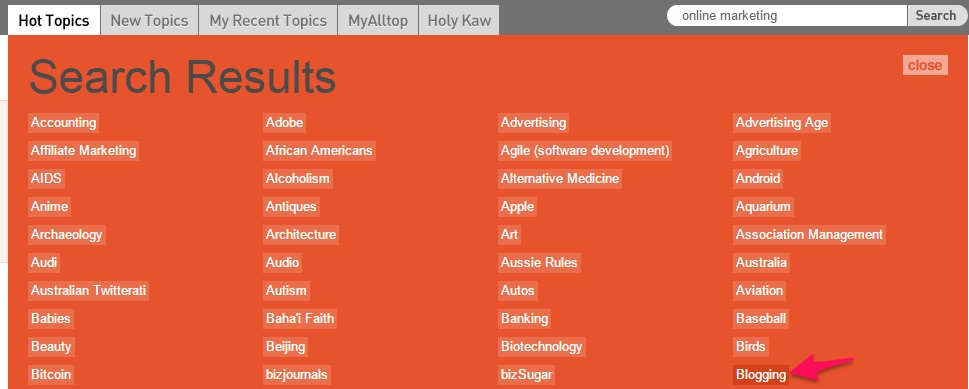






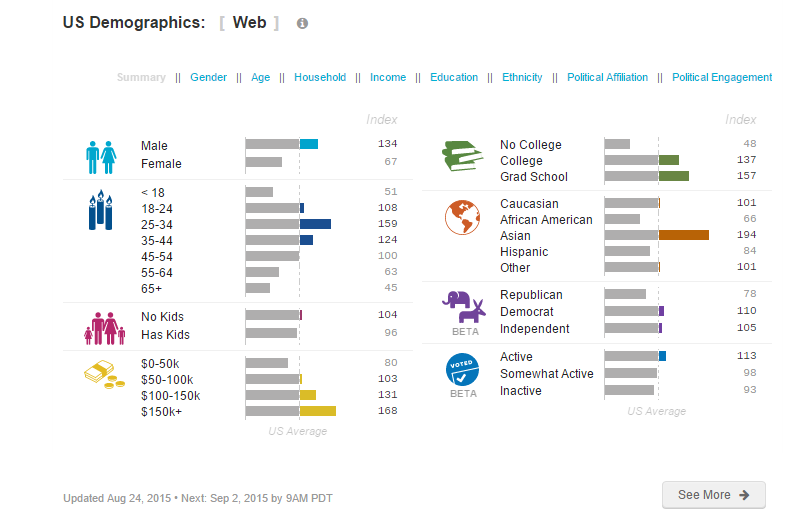














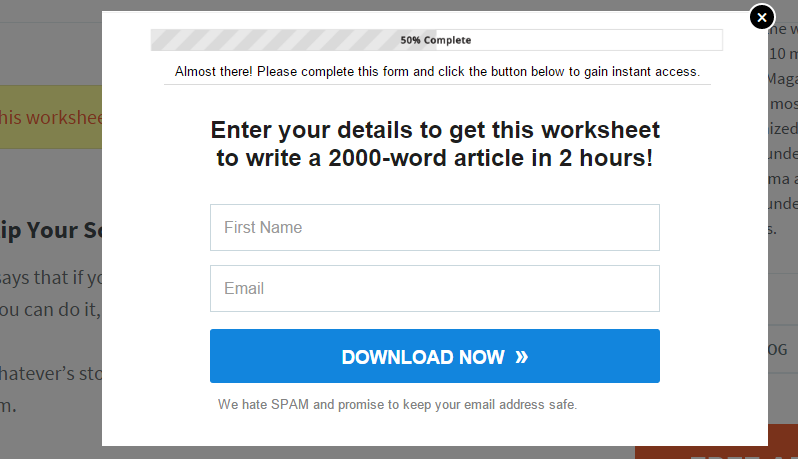







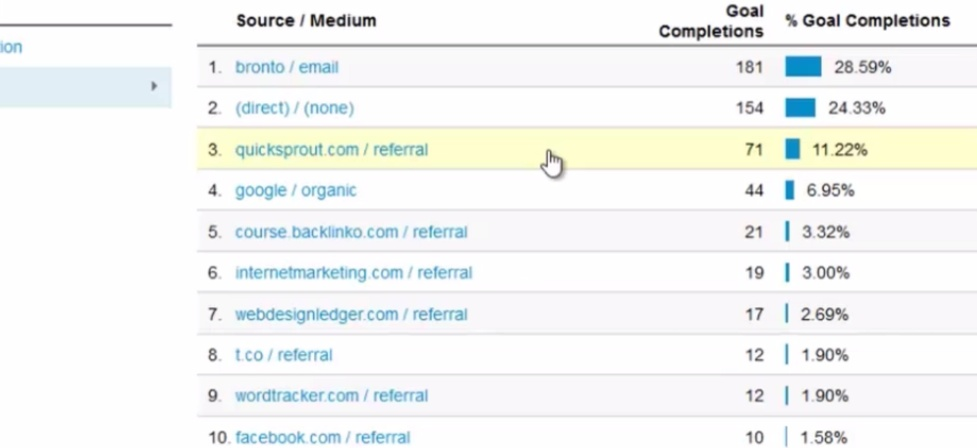

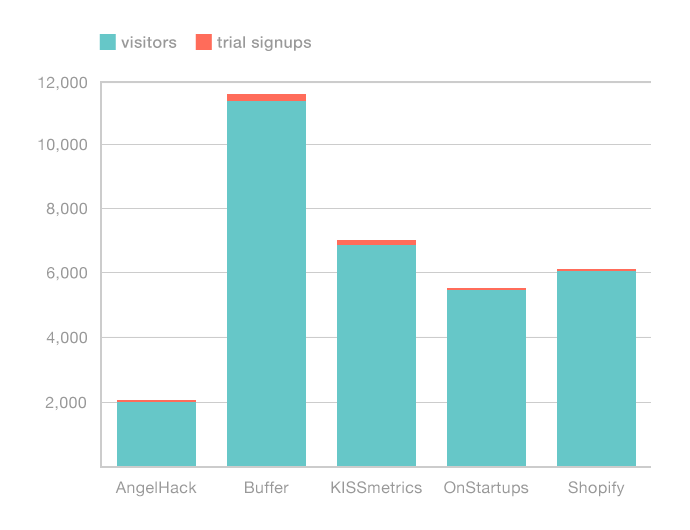
Comments (110)